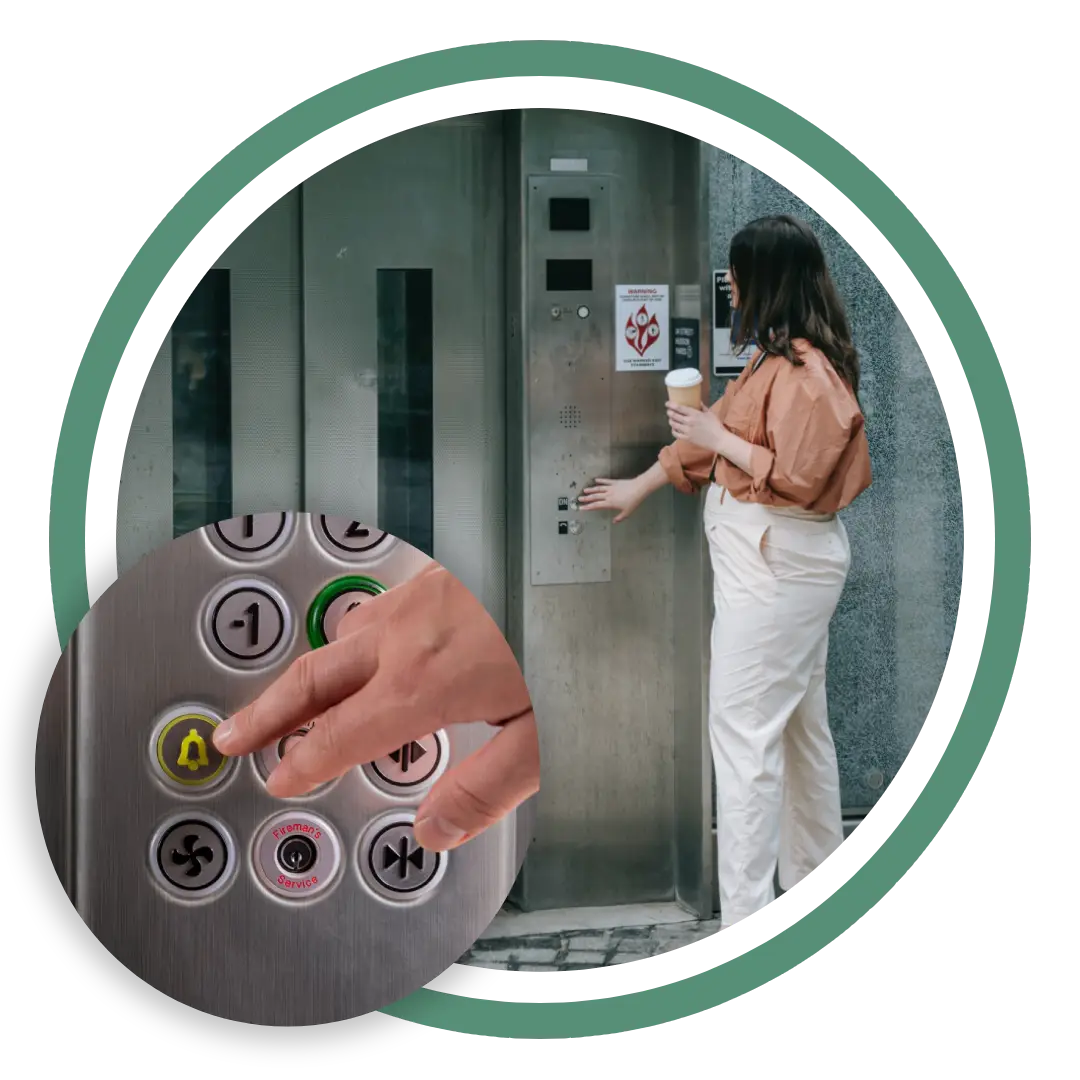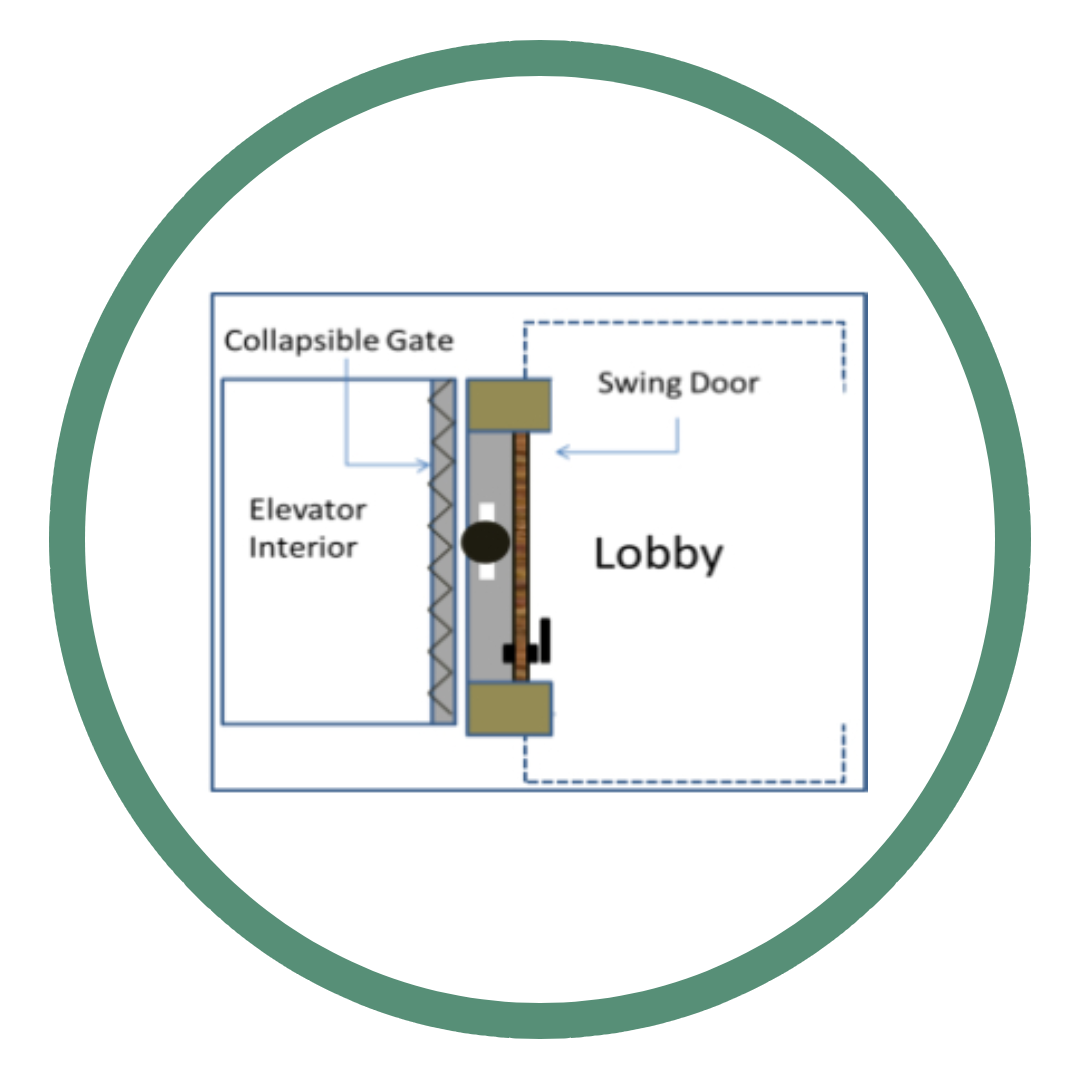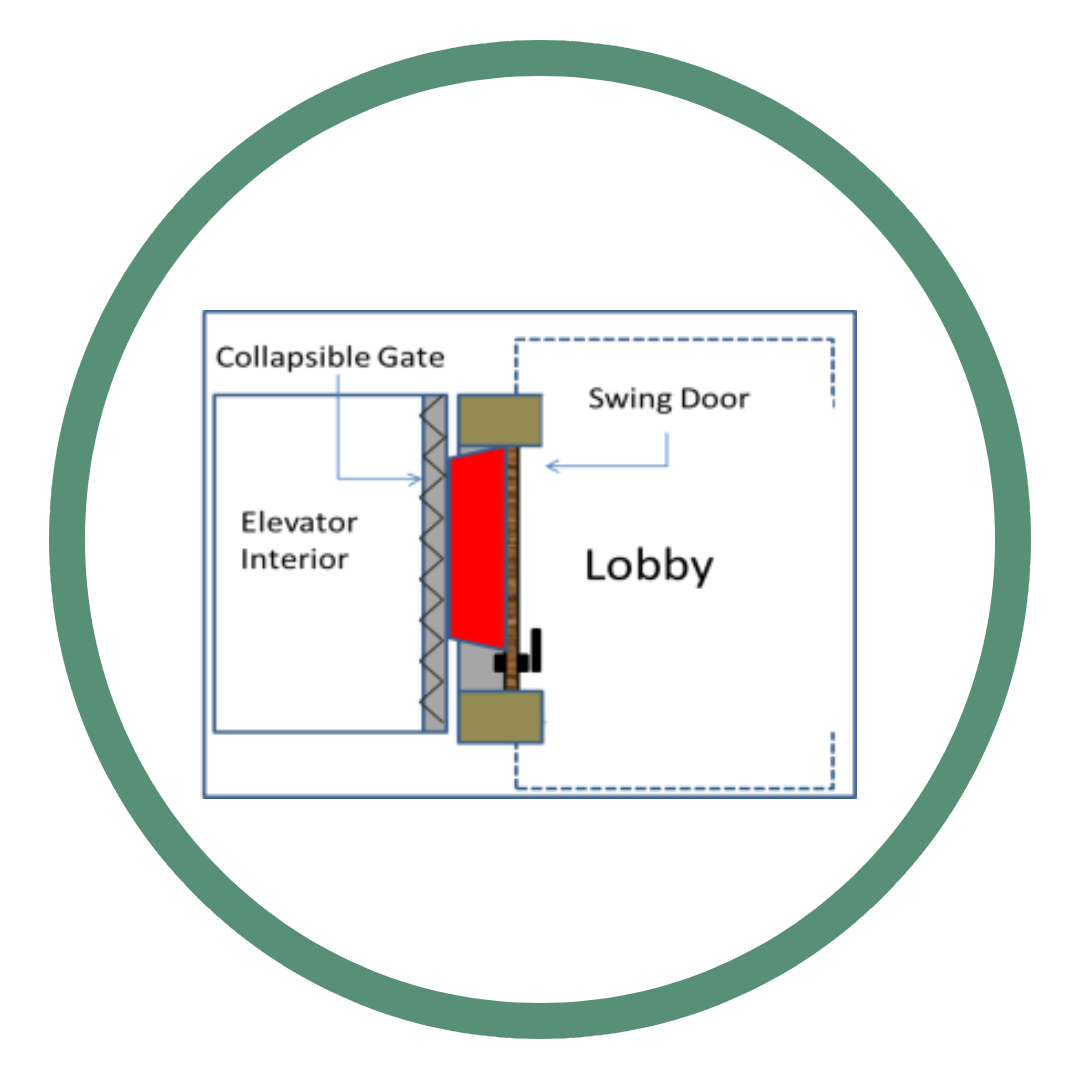
Read About Elevator Safety Requirements and More
Residential Safety – Spacing Between Doors Safety Issue with Residential Elevators
Spacing Between Doors


Problem and Requirements
Many home elevators have been installed with gaps between the hoistway swing door and the collapsible gate—creating a serious safety issue. A fully code complainant elevator per the ASME ANSI A17.1 National SafetyCode for Elevators- Section 5.3 Private Residences Elevators states that the hoistway must meet these requirements.
ASME 5.3.7.2 of the above-referenced code clearance between the hoistway doors or gates and the landings sills and car doors or gates effective May 2016.
Clearance requirements within a private residence state:
The clearance between the hoistway face of the hoistway doors and the hoistway edge of the landing sill shall not exceed 3/4″ (0.75 in).
The distance between the hoistway face of the landing door and the car door or gate shall not exceed 4” (inches).


Concern
A young child or pet can get caught in the space between the swing door and the collapsible gate when the elevator goes into motion.
Solution
A Baffle to close the gap and help prevent a swing door from locking and trapping a pet or child. The plastic baffle is installed on the hoistway swing door and prevents a gap between the doors.

